Explore more updates from across the automotive world.
- Media Center, OICA News
François Roudier Speech @ Bharat Mobility January 2025
Honourable Minister Kumaraswamy, dear Members of SIAM, distinguished guests, ladies and gentlemen, and fellow enthusiasts, Good morning.
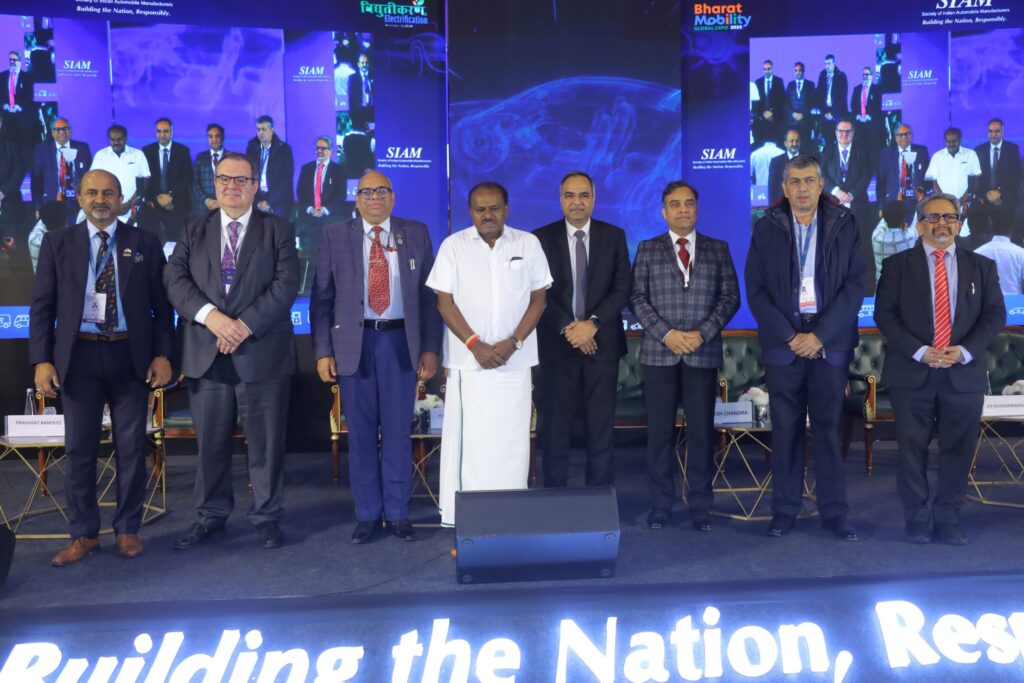
Share this article
LinkedIn
Facebook
X

OICA
Honourable Minister Kumaraswamy, dear Members of SIAM, distinguished guests, ladies and gentlemen, and fellow enthusiasts, Good morning.
Yesterday I had the pleasure of being invited by my friends at SIAM to attend the speech of your Prime Minister, the Honourable Modi. What a beautiful vision of the future and enthusiasm!
I stand before you today to share insights on a topic that is both timely and critical to your nation’s progress: the electrification of India’s automotive industry. By “electrification”, we mean the full range of vehicle technologies that do not rely solely on the internal combustion engine (ICE). This includes battery electric vehicles (BEVs), plug-in hybrids (PHEVs), extended range electric vehicles (EREVs), full hybrids and more, even more yet to be invented. In short, this is the next frontier of mobility – one that India must embrace with vision and determination.
You may not know that OICA, the International Organisation of Automobile Manufacturers, was founded in Paris in 1919 to build a new civilisation based on growth and freedom through mobility. After the Second World War, OICA played a key role in shaping global automotive regulations as the sole partner of the United Nations representing car manufacturers. Over time, its membership has expanded across all continents and SIAM joined OICA 23 years ago and became a permanent member of the Council in 2011.
Today, I would like to highlight why India’s continued – and accelerated – shift to electrified vehicles is essential not only for your domestic market, but also for boosting your export capabilities.
________________________________________
- Building on India’s enthusiasm for cars
India has always been a nation of car and motorbike enthusiasts. From a young age, Indians grow up admiring vehicles that offer a sense of freedom, status and adventure. Motorsport and the admiration of trucks and buses across all terrains show how deeply rooted the automobile is in your national culture.
But this deep-rooted passion must adapt to a new reality. The global automotive industry is moving towards electrification. Some may call it a “transition”, I call it a “revolution”. The Indian people’s enthusiasm for cars can – and must – evolve to embrace these innovations.
________________________________________
- Harnessing India’s skilled workforce
One of India’s greatest strengths is its highly skilled and talented workforce. Every year, its prestigious institutions churn out scores of graduates who excel in engineering, computer science and design.
As we move towards electrification, you have a tremendous opportunity to channel this talent into the research, development and manufacturing of the next generation of vehicles. BEVs, PHEVs, EREVs and full hybrids each require specialised expertise – from battery chemistry and power electronics to embedded software and control systems. The automotive world is looking to India for both capable minds and low-cost, high-quality manufacturing – this is your moment to show them you are ready.
________________________________________
- India’s technological progress and potential
We must remember that the electrification journey is about much more than just replacing internal combustion engines with electric powertrains. The future of mobility is being shaped by autonomous driving systems, advanced connectivity solutions and innovations in battery technology and charging infrastructure. We once were a mainly mechanical industry, we will stay mechanical but now, include chemical (batteries) and advanced IT. These last items make up the majority of a car’s value. I am not going to talk much about batteries, there are a lot of speeches to come, but I will focus on IT.
The Software Designed Vehicle (SDV) with AI, will be the backbone of mobility, enabling everything from real-time vehicle diagnostics to over-the-air updates and sophisticated driver assistance.
India has quickly established itself as a leader in software development, and its technology is home to many start-ups and R&D centres. The trend towards electrification dovetails perfectly with India’s growing expertise in information technology. By aligning your IT expertise with the automotive industry, you can create advanced solutions that meet the demands of modern mobility. And it can also keep your skilled students at home – beware the threat. In Europe, I see a terrible brain drain to the US, in AI and autonomous vehicles.
________________________________________
- Government support and economic growth
Abroad, an often underestimated factor in India’s automotive rise is the strong support it has received from the government. Policies such as “Make in India”, the collective “Automotive Mission Plan 2016-26 (AMP 2026)” and various R&D incentives have paved the way for new manufacturing facilities and innovation clusters. Central and state governments have announced numerous schemes to encourage the adoption of electric vehicles, including tax benefits, subsidies and infrastructure development programmes for charging networks.
If I have a message for your government, it is this: do not do what some European countries have done. When you start a policy, such as a bonus for EVs or PHEVs, set a clear path and stick to it. Do not change the rules every year, even if you think it might be more effective. At the end of the car chain, there are sellers and buyers who do not want the cost of cars to change.
________________________________________
- A vision for sustainable mobility
Sustainable mobility is imperative in the face of pressing concerns about air quality, climate change and oil dependency. Each electrified configuration offers unique advantages. Taken together, these solutions expand your mobility choices while reducing your carbon footprint.
We also need to consider India’s renewable energy potential – nuclear, wind, solar and biomass. By linking electrified vehicles with clean energy, you create a virtuous circle that even, also includes recycling.
Domestically, this transition is essential for the well-being of your citizens and your environment. Internationally, the adoption of such vehicles will enhance India’s reputation as a responsible global leader in the fight against climate change. This forward-looking approach will also boost the confidence of investors and trading partners who value a predictable policy framework for sustainable growth.
________________________________________
- Ensuring export competitiveness in the global market
The global automotive market is undergoing a seismic shift – countries across Europe, North America and Asia have announced timelines to phase out pure ICE vehicles.
With its established manufacturing infrastructure and strong supplier network, India is well positioned to become a major exporter of electrified vehicles. By focusing on cost-controlled production, quality assurance and continuous research, it can serve markets on multiple continents. Moreover, the global appetite for electric commercial vehicles, buses and tractors offers India the opportunity to lead in this niche, placing it at the forefront of global supply chains.
Unfortunately, growing concerns between the US and China are shaking the automotive world. We don’t know precisely what will happen, but it seems a far cry from free trade! Threats are also export opportunities, and India will also have to rely on this to develop its products abroad.
________________________________________
- The road ahead and a shared ambition
But as we look to the long term future, I think the road is wide open. Partnerships between automotive giants, multinationals and Indian companies will produce advanced models with better safety standards, lower running costs and cutting-edge design.
Ultimately, all these achievements are based on the collective ambition of your people. Engineers, designers, industrialists, policy makers and consumers alike have a stake in shaping the electric and hybrid vehicles of tomorrow.
In this great journey, OICA recognises the special contribution of SIAM and the Indian automotive industry. We applaud the speed with which India is adapting to the challenges and opportunities of the new automotive world. The very diversity that defines India – across geography, culture and economic strata – can be harnessed to produce a range of solutions that will be admired around the world. OICA is proud to host Indian experts in our various working groups – and my message to SIAM is: “bring us more experts”!
________________________________________
Ladies and Gentlemen, as we celebrate the vibrant automotive culture we share at this great motor show, Bharat Global Mobility 2025, let us also embrace the electric and hybrid revolution that will shape the coming decades. By building capacity for competitive non-ICE vehicles, you are ensuring that India remains a leader in the global automotive landscape.
Yesterday, when I came to the inauguration, as a foreigner, I had a big question for myself: what is the proper name of your nation? India or Bharat? What I have understood is that everyone is on the move here. Your nation never stops. That is why, for me, you also have another name: ” The Land of Mobility”!
Thank you for your time and consideration.
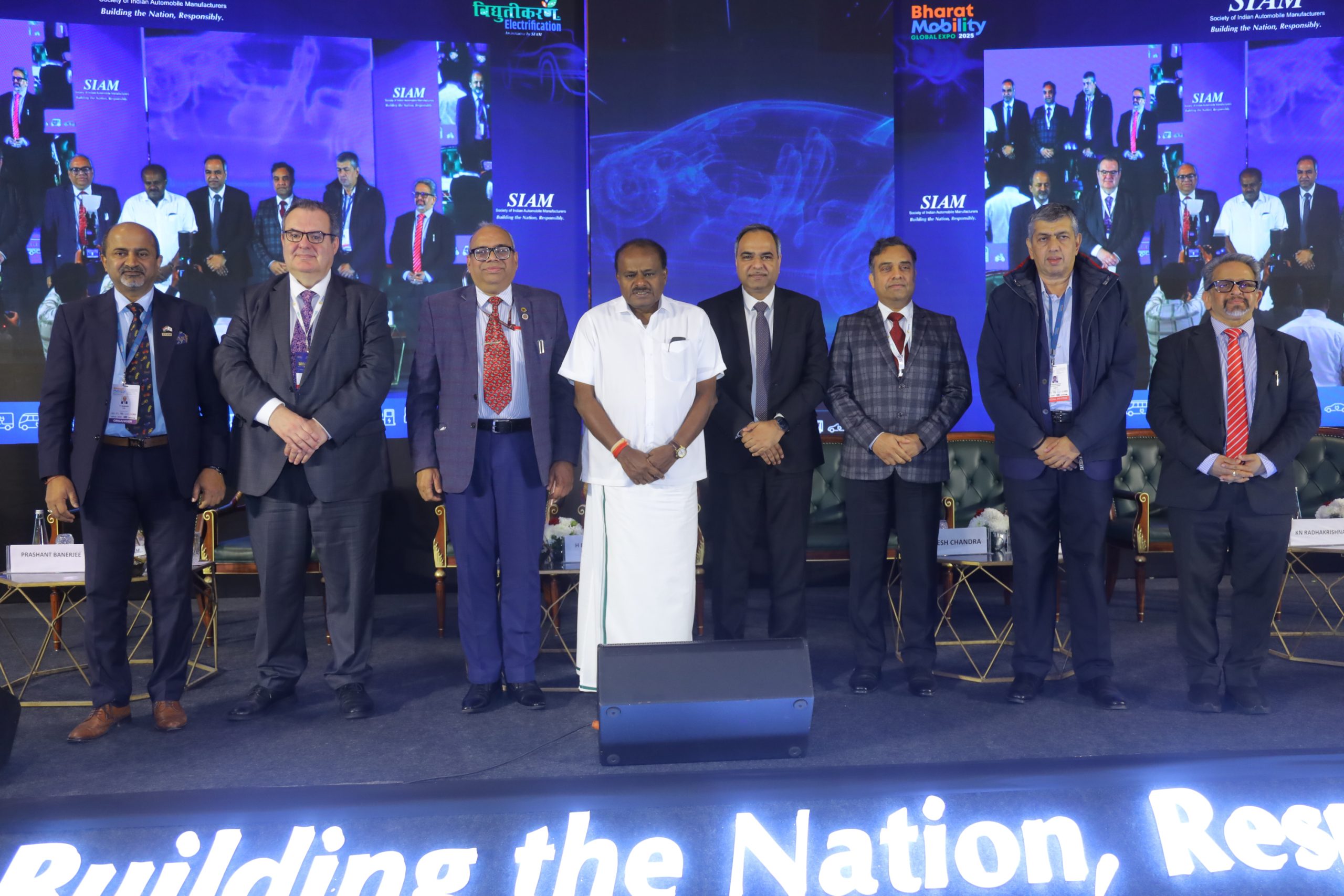
Names from left to right
- Prashant Kumar Banerjee (SIAM Executive Director)
- François Roudier (OICA Secretary General)
- Sudhendu Sinha (NITI Aayog, Advisor)
- D. Kumaraswamy (India Minister of Heavy Industries and Minister of Steel)
- Shailesh Chandra (SIAM President and Managing Director, Tata Motors Passenger Vehicles & Tata Passenger Electric Mobility)
- Dr Hanif Qureshi (Ministry of Heavy Industry, Additional Secretary)
- K N Radhakrishnan ( TVS Motor Company, Director & CEO)
- Sushant Naik (Tata Motors, Global Head – Govt & Public Affairs)

Other News

- OICA News

OICA
New Zealand's Motor Industry Association goes global with OICA membership
New Zealand’s Motor Industry Association has become a full OICA member, strengthening global collaboration and ensuring the Asia-Pacific region’s perspectives are represented in international automotive discussions.

- OICA News

OICA
Automobile: ANAC Chile Joins OICA as New Member
Paris – Santiago: The OICA Organisation Internationale des Constructeurs Automobiles is pleased to announce that ANAC (Asociación Nacional Automotriz de Chile) has officially joined OICA as a full member, further expanding the global reach and diversity of the association’s network.

- OICA News

OICA
Shailesh Chandra, President of OICA, Hildegard Müller, Vice President
OICA announces the election of Shailesh Chandra, President of the Society of Indian Automobile Manufacturers (SIAM), as its new President, effective November 1, 2025, succeeding John Bozzella, President and CEO of the Alliance for Automotive Innovation (USA).
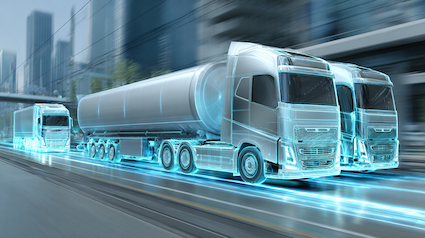
- OICA News

OICA
Pragmatic and successful decarbonization of road transport
The Strategic Role of Sustainable Fuels including Biofuels and Technological Diversity
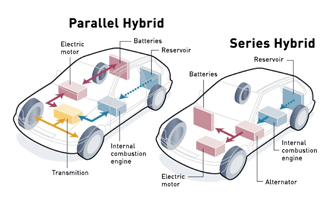
- Autos and Fuels

OICA
Hybrid
Two main types of hybrid-electric vehicles exist, and they have different advantages and different applications, but both have fuel efficiency advantages over conventional internal combustion engined vehicles.
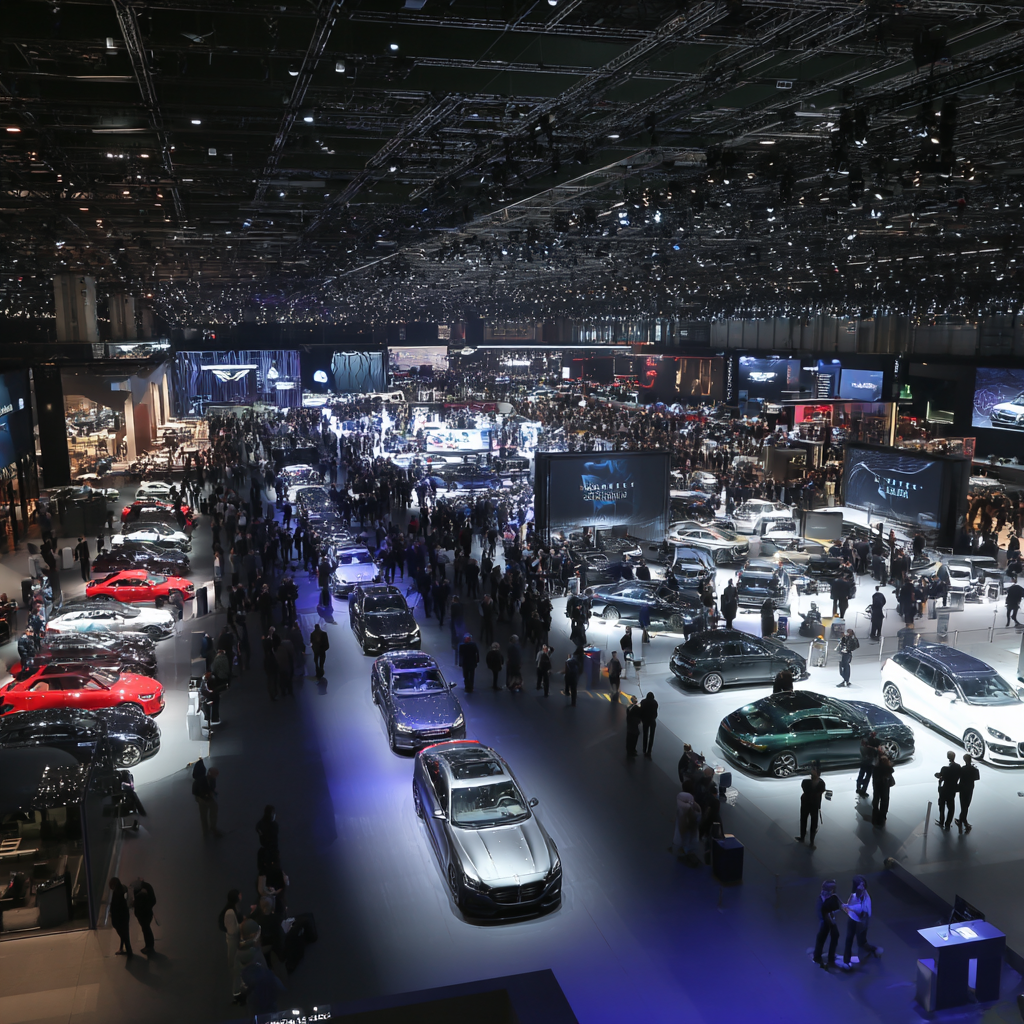
- Media Center, OICA News

OICA
OICA Launches New Roadmap for Motor Show Activities
IAA, Munich, September 10, 2025 – The International Organization of Motor Vehicle Manufacturers (OICA) today announced a renewed structure and vision for its motor show activities, reflecting the evolving needs of the global automotive industry and the motor show ecosystem.
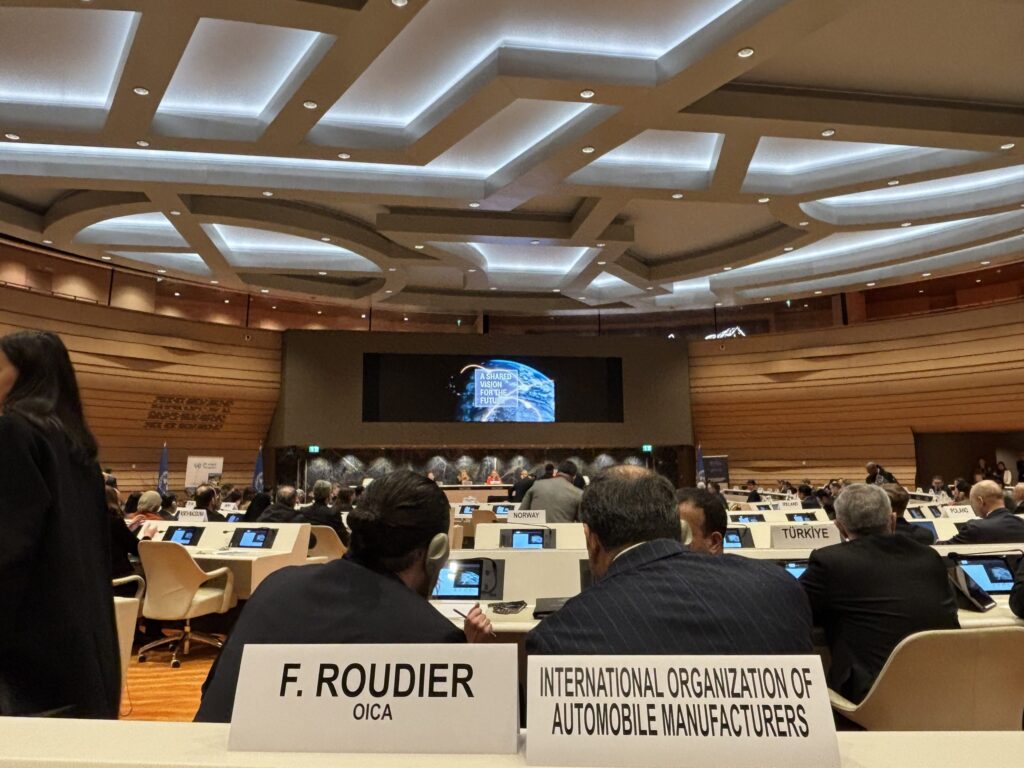
- Media Center

OICA
UNECE, the 87th session of the Inland Transport Committee (Geneva, February 11, 2025)
It is a privilege and a pleasure to address you today as the new Secretary General of OICA, the International Organization of Motor Vehicle Manufacturers.

- Media Center, OICA News

OICA
François Roudier Speech @ Bharat Mobility January 2025
Honourable Minister Kumaraswamy, dear Members of SIAM, distinguished guests, ladies and gentlemen, and fellow enthusiasts, Good morning.
- General

OICA
IAA TRANSPORTATION 2024 Sets New Records and Delivers a Clear Message: The Industry Impresses with Market-Ready Innovative Products, Government Needs to Enable Progress Through Infrastructure Initiatives
145 world premieres demonstrate the impressive innovation of the industry – Visitors and exhibitors delighted and highly satisfied – IAA TRANSPORTATION is more international than ever – Record bookings for test drives – From talk to action: Policy makers must develop and implement a concrete action plan focusing on infrastructure
- Media Center

OICA
François Roudier @ China Auto Forum 2024 : “The never-ending automotive revolution”
Good morning, and thank you for being here today. As we stand at the crossroads of innovation and tradition, it is important to remember the incredible journey of the automobile and the constant revolution it represents.
- Media Center

OICA
François Roudier appointed Secretary General of OICA and Olivier Fontaine, Technical Director
Paris, France – May 13, 2024 – OICA – the International Organization of Motor Vehicle Manufacturers – is pleased to announce the appointment of François Roudier as its new Secretary General, effective June 1, 2024.
